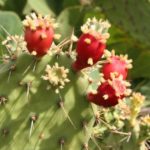
Overseas Countries
and Territories Association

Overseas Countries
and Territories Association

Juan Thijsen
Representative of the Government of Aruba to the EU
President of the Executive Committee of OCTA

Aruba’s landscape is dominated by cactus, palm trees and other tropical vegetation. Compared to other Caribbean islands Aruba is flat, with the highest hill being the Arikok (184 m). The sea on the southside of the island is calm and it is there that the world-famous white beaches of Aruba such as Palm Beach and Eagle Beach are located. On the other side one encounters a very different sea, which is very rough, and a rocky coastline.
Aruba enjoys a very comfortable tropical climate with refreshing northeast trade winds. The median and almost constant temperature is 28ºC, the rainfall is limited to approximately 50 mm yearly, mostly in the months of November and December. Because of the low rainfall, Aruba has a dry climate and arid landscape. The island distinguishes itself from the northern Caribbean by the absence of tropical storms and hurricanes.
Aruba is part of the Kingdom of the Netherlands but has been an autonomous country in the Kingdom since 1986. The Netherlands is constitutionally responsible for its defence and external affairs.
Aruba is a parliamentary democracy. The Head of State is the King of the Kingdom of the Netherlands who is represented by a Governor. The government of Aruba consist of a Council of Ministers, presided by the Prime Minister. This council is accountable to a 21-member parliament, the “Staten” which is elected every four years by general elections on the basis of a multi-party system.
Tourism, petroleum bunkering, hospitality, and financial and business services are the mainstays of the Aruban economy. In terms of industry, the island has oil refineries in Sint Nicolaas as well as other smaller-scale industrial activities. The economy of Aruba also benefits with a free-zone trading area.
Aruba’s main economic activity is tourism. As of 2017, over 2 million tourists visited Aruba annually, with the large majority (80-85%) of those from the US. Aruba is heavily dependent on imports and is making efforts to expand exports to improve its trade balance.
The policy of the Aruban government is to increase economic activities based on environmentally friendly businesses and green energy. In 2011 Aruba and the Netherlands Organisation for applied Science “TNO Delft” signed an agreement to make Aruba a sustainable island. A regional research centre for renewable energy sources was opened. Aruba aims to be a commercial hub between Europe, Latin America and the Caribbean and therefore a European House had been established in Aruba.
With over 5000 wind and 2500 solar hours, Aruba holds great potential for sustainable energy generation. Aruba already obtains 17.6% of its electricity needs from wind and 1.2% from solar energy. Its target is to cover all electricity demand by 100% renewable sources.
GDP: 5 309 million AFL (2016)
GDP per capita: 48 108 AFL (2016)
Aruba is increasingly taking part in EU programmes. So far, it has been successfully involved in Erasmus+, BEST2.0 and European Solidarity Corps.
For more information, click here